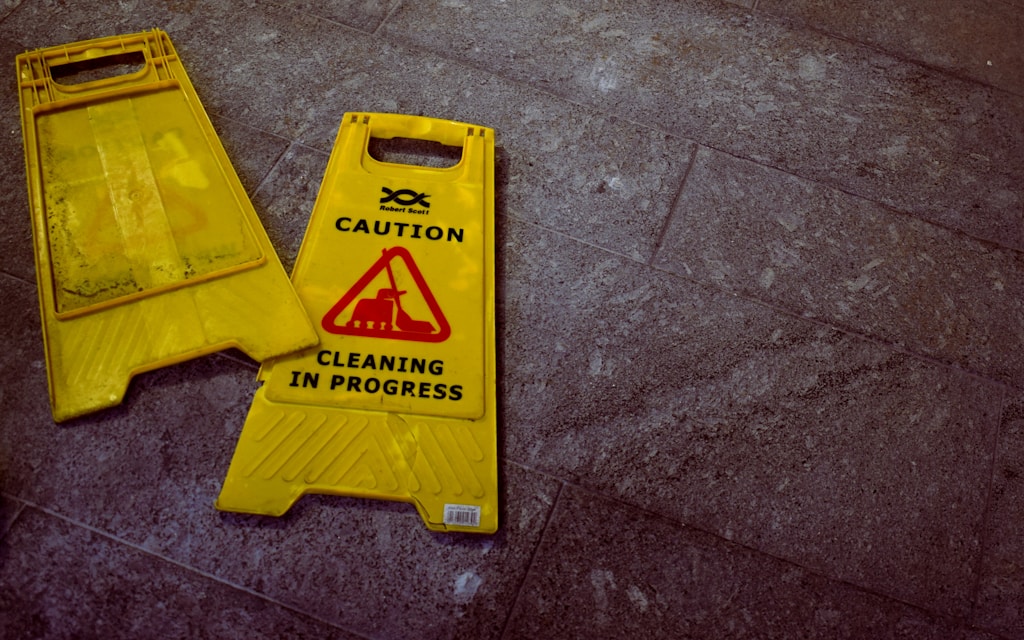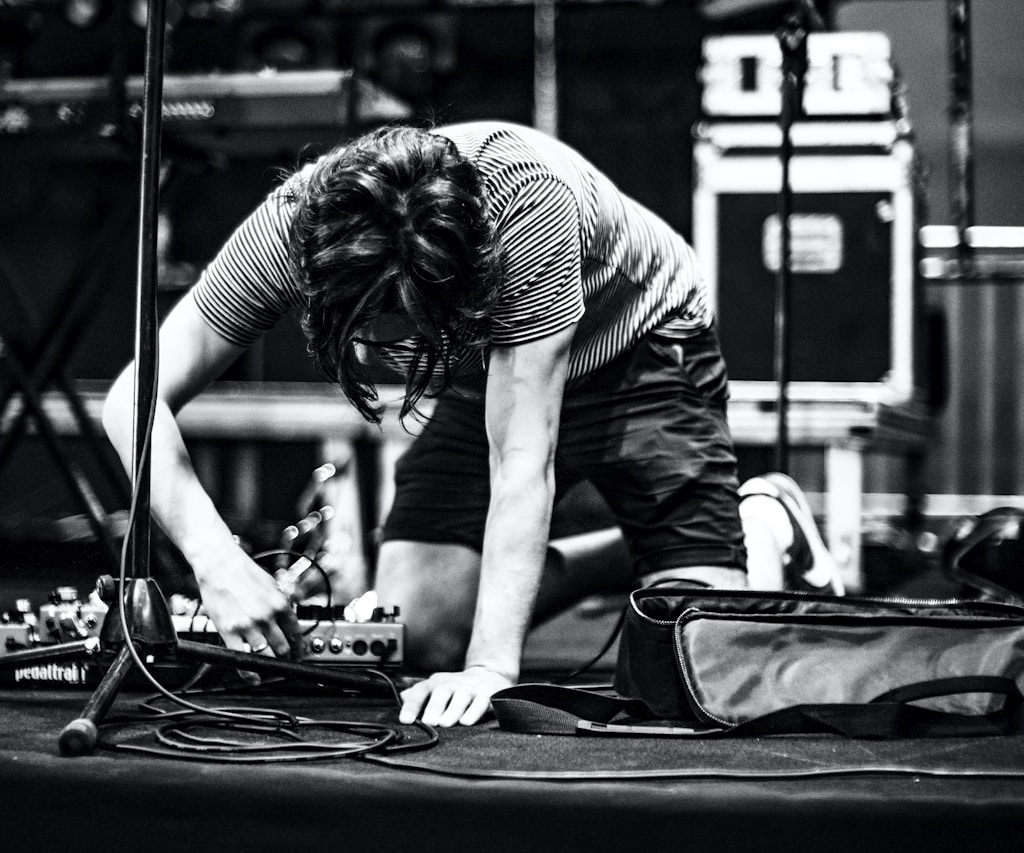To transpose on the fly with a baritone, knowing a little music theory goes a long way. This is different than slapping on a capo or imagining your guitar with a capo that can lower the notes, all of the notes are in different places. Even tuning takes on a slightly different meaning. Let me explain.

If you’ve never even heard of a baritone guitar, let me recommend a couple of players for you: Mark Lettieri and Joe Bonamassa. There are many others but those are the two I’m grooving to these days.
Tuning
First things first, right? My baritone is tuned down to B as if you were starting from the B string and continuing from there. That would work out to B-E-A-D-G-B. However, that messes up the tuning such that simple chord shapes like C, no longer play correctly. Remember that your tuning from the frets goes 5-5-5-4-5, This results in a tuning like this: B-E-A-D-F#-B. If you use a tuner, like I do, that F# is a critical detail. Now, when you play an E chord, you are actually playing B. That is, the E chord shape in the first position results in a B chord – B-Eb-Gb. Playing the C chord shape results in the G chord.
From here, we are going to get into a bit of theory. A little goes a long way and you can get more from a previous post (Why Learn Music Theory? I Play By Ear!) and for still more, hit my course on Basic Theory for Guitar.
Getting familiar
After getting the tuning straight, take care to notice where the notes are positioned. If you have been playing for some time, you should have the notes mapped from the nut to the fifth fret. Just looking at the roots of your chords will get you familiar with the bass strings. The rest should be easy to fill in just from tuning and knowing how scales work.
That low B string now follows the same pattern you know from the high B sting: B-C-C#-D-D#-E. From there, you know an E shape gives you the B chord. The next fret up would normally give you F but now it is C. The third fret will give you D and so on.
Transposing on the fly
You might be seeing how this going to go already. When I look at the neck and have the map of the notes in mind, transposing on the fly becomes easy. For example, the notes on the strings follow the same pattern as before:
Using the frets, we have 0, 1, #2, 3, #4, 5 on the 6th and first strings. On a standard tuned guitar, that would be E-F-F#-G-G#-A.
On the baritone, we now have: B-C-C#-D-D#-E
Armed with that knowledge and the CAGED system, we can derive our chords. Giving the shape then the equivalent chord in first position (i.e. your cowboy chords) look like this
- C becomes G
- A becomes E
- G becomes D
- E becomes B
- D becomes A
The trick is to remember what the bass or root note is when you fret the shapes. For example, when you put your fingers on what would normally be C, the root note your third/ring finger rests on is actually G. That gives you the G chord on the baritone. Add the fifth for the root which would normally be C/G, you get G/D. That low-low D note fills the bottom out rather nicely. A bit of earthquake timbre added to your tone!
What else can you transpose on the fly?
As you transpose, remember to add in the bass note transitions for some real grumble and thunder in your playing. Now you can go from E to C# with some serious authority. Dropping from D to B (bass notes: D – C# – B) or even simply going from D to A/C# is easier than on a standard tuned guitar. What was once a stretch to the fourth fret is now right in reach on the third fret.
That should get you primed for your own baritone adventures! Typically at church, we have a three song set right at the start. There is no time for changing guitars; so, the choice needs to be made early and practiced to get familiar with the new layout. Baritones are not very expensive and may be worth looking into for your own arsenal. Let this be your primer!








Creating Unique Music: How to Have Staying Power
If you want your music to have staying power, i.e. music that will stand the test of time, here are some things to consider. Lately, I have been hearing about modular synthesis and it reminded me of groups that became studio bands such as The Beatles and Steely Dan. The question I ponder is: If it cannot be faithfully performed live or needs something unique in order to reproduce it, will it stand the test of time?
As a guitar player and writer, I think about this occasionally. Continuing on previous posts, MIDI For Guitarists and Do You Have G.A.S? on the virtual realm, and learning about modular synthesis (Is This the Pedal Rig of the Future?) I am thinking more about this. Let’s consider these aspects of music:
Repeatability and Staying Power
Think about how we start to learn to play. We copy others either by learning to read the written music notes or hearing and translating that to guitar (i.e. learning by ear). For me, I started with guitar instruction books and a teacher who would come by the house for lessons. However, I really didn’t start to “learn” my instrument until I found I could learn my favorite songs by ear. It was a bit of a revelation and opened the instrument up to me. One of the things I realized was that my instructor taught me how to play a few songs incorrectly. It may have been that he knew what I could handle at the time but my ears became attuned to the nuances in the music after this time.
Now, let’s say the music required particular instruments or sounds that I could not replicate on guitar. Would I have learned them? Not likely. There are some songs I tried but was not satisfied with the results and moved on. For example, the sitar of The Beatles Within You Without You from Sgt. Pepper’s Lonely Hearts Club. The melody was easy enough but I could never get the right feel. I also attempted a Billy Joel song and, while I could get the basic song down, the piano was a tough instrument to capture on guitar.
Still, I could get these songs to a point of being recognized by others. Would I play them in a cover band on guitar? Maybe not. I would try them on solo guitar, though. There is enough there to satisfy and recognize. I tried these more as challenges than actual songs for a repertoire. Much easier to crank out Sweet Home Alabama, eh?
The Challenge of Communication
On to passing our music on to the next generation. How will that happen? Clearly, you could write it down as has been done for generations. Recording also preserves the performance reliably for the most part.
Written music has staying power
There is more written music than anyone could possibly consume in a lifetime much less master. We all concentrate on the stuff we enjoy the most and that narrows the scope considerably. The sheer volume is still overwhelming and continues to grow. The issue with writing music these days is going beyond the standard components of music. Adam Neely explores this topic occasionally on his channel.
How do we include micro-tonal notes or electronic instrument settings in modern music notation? Many of us try to get the right sound of guitars in our favorite songs or ones used by our favorite artists. It can become a passion and even an obsession (G.A.S.) to get “the tone“. The ultimate communication may be the recording but it is not without its challenges.
Recording as communication through the ages
Getting our music down on some medium may be answer. At the very least, the precise sounds we want to produce are captured for all time. Or, is it?
Consider the lowly vinyl LP. Once as ubiquitous as the CD was. These days, it is downloaded digital media. As we have progressed from one recording medium to the next, music is lost. Visit a local estate sale or yard sale and you can find recordings that are no longer available except at this sale as a used record.
Tape is even worse. Originally relegated to the studio and then a convenient, portable medium, tapes wore out. My collection died years ago and I rarely see tape for sale anymore. Try finding decent cassette machines now. Some studios still use tape but you are not going to get to touch or even see those. A fire at Universal Music Group saw to it that even the master tapes of many important recordings are now GONE!
How will music be remembered down through history? Some will and some will not be remembered.
On a side note, it seems some recording labels and artists are bound and determined to make sure their music is forgotten. See this video by Rick Beato: Blockers!! How Rock Music is destroying itself.
Special Instrumentation
There is quite a bit of music that is meant to be a one-off effort. Typically, this is done by studio bands who never intend to tour. Their music is more like a fine painting or sculpture. Copies may be made but they are just that: copies. Attempting to recreate them live was never the plan. Take, for example, The Beatles Tomorrow Never Knows. A wild work of studio wizardry that took enormous effort at the time but now can be done digitally with ease. Cut and paste anything to create to your heart’s content!
Consider the modular synthesis mentioned above. Rhett Schull makes the comment in his video that sounds are basically, one-offs. Super creative but never to be repeated.
My question is this: will anyone know or care 20, 50, 100 years from now? It may sound cool and great but it also may be dated. Updating a one-off may be impossible. The bones of the song (notes, chords, beat) may be the only thing preserved as the changes in the recording medium have moved on and the originals are long gone. The original intent and sound will be lost.
Staying Power or Not
If you are simply playing other’s music (i.e. covers), staying power is not a real concern. The music you want to play is right here at your fingertips. Somebody has done the job for you but you don’t know what you are missing. As a director of my high school plays would say after a poor performance: The audience does not know what they just missed. The music you know now is standing the test of time, for now.
If you are creating for the sheer joy of it, staying power is not a real concern either. Have fun and enjoy the ride! Exploring the ways you can express yourself can be rewarding enough and is fulfilling in and of itself.
I straddle the two. I would like my creations to be more than just a one-off but I enjoy the process of creating just for the joy of it all! Who knows? Maybe someone will find one of my recordings and make a million with them years from now. More power to ya!
Share this: